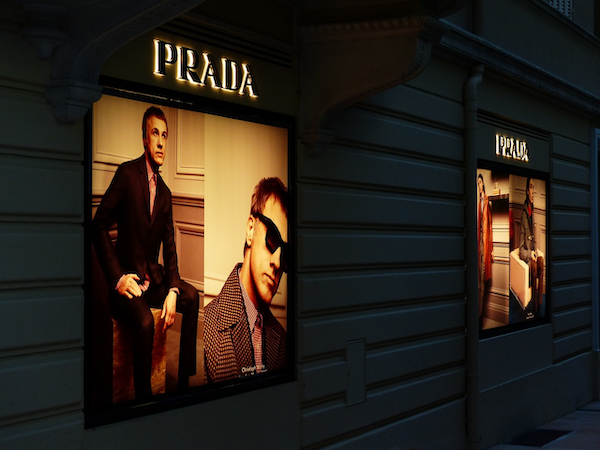
LETTURA
La moda italiana è sinonimo di eleganza, artigianalità e un fascino indefinibile. È la patria di case di moda acclamate a livello mondiale, ognuna con uno stile distintivo e una storia interessante.
Guccio Gucci fondò Gucci a Firenze nel 1921. Gucci era una volta un fattorino di ascensore nel Savoy Hotel di Londra, dove fu ispirato dai bagagli eleganti degli ospiti ricchi. Oggi, Gucci è un simbolo di lusso e di moda innovativa.
Il brand Giorgio Armani deve la sua nascita a Giorgio Armani, un tempo studente di medicina e addetto all’allestimento delle vetrine. Fondato a Milano nel 1975, Armani introdusse una vestibilità più rilassata nei completi da uomo, rivoluzionando l’abbigliamento maschile.
Prada, un altro marchio iconico, fu fondato da Mario Prada a Milano nel 1913. Curiosamente, si dice che Mario fosse contrario alla partecipazione delle donne agli affari, eppure fu sua nipote, Miuccia Prada, a trasformare il marchio nella potenza della moda che è oggi.
Versace, fondato a Milano nel 1978 da Gianni Versace, è noto per i suoi disegni audaci e glamour. Gianni inizialmente voleva essere un direttore d’orchestra; invece, ha orchestrato un tipo diverso di arte sulla passerella.
I principali eventi di moda in Italia sono la settimana della moda di Milano, che si tiene due volte l’anno in febbraio/marzo e settembre/ottobre, e Pitti Uomo a Firenze, un evento chiave dedicato all’abbigliamento maschile. Queste sfilate di moda dettano le tendenze globali, presentando collezioni dei migliori designer e marchi italiani.
L’Italia vanta diverse strade dello shopping di moda. Via Montenapoleone e Via della Spiga a Milano ospitano i negozi principali dei marchi di lusso italiani. Via Condotti a Roma è un’altra lussuosa via dello shopping che conduce a Piazza di Spagna, piena di boutique di alta gamma. Via de’ Tornabuoni a Firenze ospita una serie di negozi di designer nel suo contesto rinascimentale.
Valentino Garavani, il fondatore di Valentino, ha studiato moda formalmente a Parigi, per poi tornare a Roma e fondare il suo marchio nel 1960. Il suo colore “rosso Valentino” è diventato un fenomeno nell’industria della moda.
Infine, Salvatore Ferragamo, il fondatore del marchio di lusso Ferragamo, era inizialmente un calzolaio per le star di Hollywood negli anni ’20. Più tardi tornò in Italia, fondò la sua azienda omonima a Firenze e divenne il “calzolaio delle stelle”.
La moda italiana, dalla sua eleganza senza tempo ai suoi disegni innovativi, continua a modellare lo stile globale, offrendo un mix ispiratore di tradizione e modernità, ulteriormente cementato dalle influenti case di moda e dai loro carismatici fondatori.
(Testo generato da ChatGPT4, giugno 2023. Revisione contenuti e formattazione a cura di Manuela Filomena)
READING
Italian fashion is synonymous with elegance, craftsmanship, and an indefinable allure. It is home to globally acclaimed fashion houses, each with a distinct style and an interesting story.
Guccio Gucci founded Gucci in Florence in 1921. Gucci was once a lift boy in London’s Savoy Hotel, where he was inspired by the stylish luggage of the wealthy guests. Today, Gucci is a symbol of luxury and innovative fashion.
Giorgio Armani, the brand, owes its inception to Giorgio Armani, a once-medical student and window dresser. Established in Milan in 1975, Armani introduced a more relaxed fit to men’s suits, revolutionizing menswear.
Prada, another iconic brand, was founded by Mario Prada in Milan in 1913. Interestingly, Mario was reportedly against women participating in business, yet it was his granddaughter, Miuccia Prada, who transformed the brand into the fashion powerhouse it is today.
Versace, founded in Milan in 1978 by Gianni Versace, is known for its bold and glamorous designs. Gianni initially wanted to be a music conductor; instead, he orchestrated a different kind of art on the runway.
The major fashion events in Italy are the Milan Fashion Week held biannually in February/March and September/October, and Pitti Uomo in Florence, a key event dedicated to menswear. These fashion shows dictate global trends, featuring collections from Italy’s top designers and brands.
Italy boasts several fashion shopping streets. Via Montenapoleone and Via della Spiga in Milan are home to flagship stores of Italian luxury brands. Rome’s Via Condotti is another luxurious shopping street leading to the Spanish Steps, filled with high-end boutiques. Florence’s Via de’ Tornabuoni hosts an array of designer stores in its Renaissance surroundings.
Valentino Garavani, the founder of Valentino, studied fashion formally in Paris, only to return to Rome and establish his brand in 1960. His signature “Valentino red” color became a phenomenon in the fashion industry.
Lastly, Salvatore Ferragamo, the founder of the Ferragamo luxury brand, was initially a shoemaker for Hollywood stars in the 1920s. He later returned to Italy, set up his eponymous company in Florence, and became “shoemaker to the stars.”
Italian fashion, from its timeless elegance to innovative designs, continues to shape global style, offering an inspiring blend of tradition and modernity, further cemented by the influential fashion houses and their charismatic founders.
(Text generated by ChatGPT4, June 2023. Edited for style and content by R.H. Ruggles)
GALLERIA
RISORSE INTERNET

